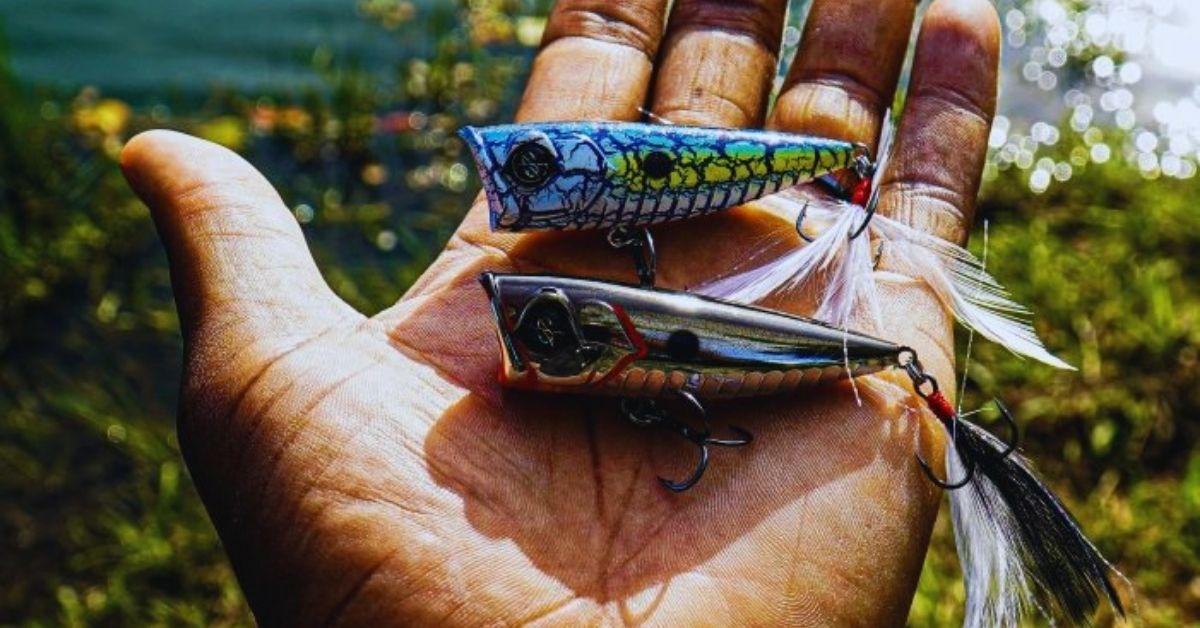3 Reasons You Should Be Throwing Topwater Poppers Right Now
There is nothing more exciting than watching a big bass blow up on a surface bait. Given the right time and conditions, topwater lures like a popper can be a very effective and efficient way to catch fish. With most topwaters, you can cover water quickly and trigger reaction strikes from bass that might pass up a different presentation.
There are countless styles of topwater lures out there, but the classic popper still remains to be one of the best. What is it that makes this plug so special and separates it from other surface baits? Let’s breakdown it down and see why everyone should have one popper (or 10 topwater poppers) in their tackle box.
1. Imitate Baitfish At The Surface
Topwater poppers work with either casting or spinning rods. For the best performance, pair poppers with monofilament or braided line.
The profile and action of poppers are primarily designed to mimic baitfish or panfish, like shad and bluegill. Many of these baitfish that bass feed on will congregate high in the water column and even break the water’s surface at times. Bluegill will especially follow this pattern while feeding on floating insects and the subtle splash of a popper is the perfect way to “Match the Hatch.” To best imitate bluegill with topwater poppers, slowly work the lure around shallow cover with long pauses between pops. Bass will usually strike a popper while it is sitting still, so don’t ever be afraid of working the bait too slow.
2. Pick Apart Shallow Cover
Poppers, like the Googan Squad Blooper, are known for drawing in big fish, especially around sunrise and sunset.
Many topwaters are intended to call up fish from deep, open water and while the popper can do that, it is most effective for target fishing in the shallows. Docks, rocks, laydowns, and grass clumps are all perfect types of shallow cover to target with a popper. Its slender body and proper weight provide accuracy and add distance to your casts allowing you to place the lure right on the edge of any shallow structure. After landing a popper near cover, let it sit for a few seconds until its initial ripples have settled. Then work it away from the cover with a slow pop-pop cadence. Once it is 10 or 15 feet away from the cover, go ahead and reel in and make another cast to a different piece of structure. This will maximize the time that your popper is in the strike zone.
3. Make Lethargic Fish React To Topwater Poppers
Dark-colored poppers create more contrast while natural or clear-colored poppers seem to be more subtle.
Because a popper is fished much slower than most topwaters, it can be the ticket when dealing with lethargic or finicky fish. Buzzbaits and walk-the-dog baits are fished at a pace that is usually too quick to allow bass that aren’t actively feeding to commit. These fish that are passed over by a fast-moving topwater, are often enticed by the subtle action of topwater poppers. The next time you’re out on the water and are struggling to get bites on a fast-moving topwater, try tying on a popper and working the same areas at a slower pace. It might just pay off for you in a big way.
Updated June 22nd, 2021 at 6:53 AM CT


